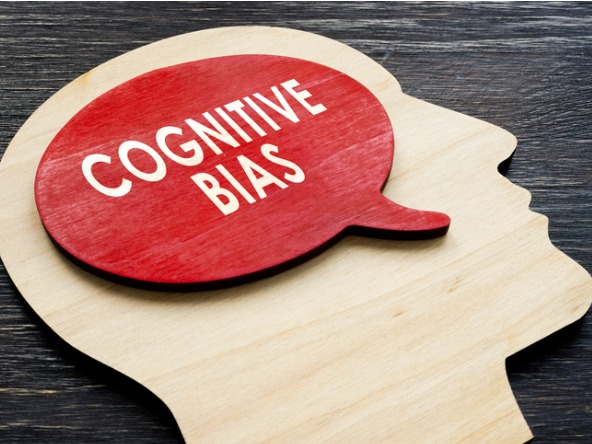Accounting for bias

Robust and accurate market segmentation is important for all businesses. Without understanding which segments you should pursue, your marketing will lack direction. There’s a way we can make a small but impactful change to today’s segmentation methods. One which would allow current methods to overcome some of their limitations.
Segmentation would gain from using insights from behavioural science to create an approach that accurately depicts what makes people behave similarly or distinctly.
There are many methods of segmenting customers. Classical methods of segmentation assume the existence of both distinct and similar groups of consumers.
But people are far more complex than this assumption allows for. We’re ever-changing. This simplistic view doesn’t account for the complexity of humans. Is there a way we can segment, while avoiding this oversimplification?
Segments can be determined in several ways:
- Behaviourally (e.g., spending habits, user status, brand interactions)
- Psychographically (e.g., personality, interests, attitudes)
- Attitudinally (e.g., opinions, perspectives)
They achieve this by asking consumers questions about themselves and their motivations around the product/category which they sell at a point-in-time.
The problem is people don’t understand themselves, or why they do things. We use guesswork to make sense of our own behaviour, and post-rationalise why we do what we do. Rational methods of segmentation don’t reflect irrational human behaviour.
This is a strategic marketing problem. Segmentation is the first part of marketing’s holy trinity – segment, target, position. Resultantly, a poor segmentation means all the marketing action that follows does so with reduced effectiveness.
So, what’s the answer?
A bias-based segmentation
As an alternative, I propose bringing in the wealth of knowledge from behavioural science to segmentation in the form of a bias-based segmentation. That is, a segmentation approach based on biases and individual susceptibility to them at a given moment in time.
There are hundreds of recorded biases, exerting a huge impact in various aspects of our lives. Compounding the impact of biases are factors which influence susceptibility to them. These factors vary in their permanence. This varying permanence means that while having a permanent aspect, the bias-based segmentation model will be continually updating with more, and more opportune, data. This is a key element to the model – as people’s behaviour changes, the model does too.
The variability in permanence of factors affecting bias-susceptibility can be loosely outlined with the examples below:
- Stable over the life-course
- Gender differences affect susceptibility to loss aversion
- In-group/out-group membership (e.g., gender and ethnicity) affects the influence of the endowment effect
- Variable over the life-course
- Cognitive ability affects how are judgements and decisions are influenced by anchoring
- Emotional intelligence predicts loss aversion susceptibility
- Variable with the life-course
- Age influences how risk-averse we are
- Constantly variable
- Emotions alter our susceptibility to status quo bias
- Can be inferred by cursor movement patterns, music choice algorithms, or voice patterns via virtual assistants
- The people we’re around influence how likely we are to conform
- Can be inferred via social networks, digital contact and geographical distance.
The above examples are just a teaser for what a bias-based segmentation could incorporate. Using well-documented biases alongside an understanding of the factors which make us more or less susceptible to them, allows us to harness them. All humans are predictably irrational. If we map out where and when this irrationality peaks and troughs, we can understand the respective intensity of biases and use this in our segmentation.
Why is bias based segmentation better than current methods?
- It better reflects actual human behaviour
Behavioural science is evidence-led, rather than theory-led. This means that its findings reflect real human behaviour. Humans behave irrationally, and your segmentation must account for this. Just because a theory makes sense logically doesn’t mean that it accurately reflects illogical human behaviour.
- Isn’t static; keeps up with consumers
Static segmentation models are limited due to their oversimplification of human behaviour. People are constantly changing for many reasons. Your segmentation model must be able to keep up. A bias-based segmentation will be continually updating due to the nature of bias susceptibly. Consumers will shift between segments, and segments themselves may evolve. The model will remain accurate in-the-moment.
Challenges
Of course, practically, it’s hard to try and collect data on every factor which influences susceptibility to every bias and calculate the cumulative and/or interactive effects of each bias. However, there’s no need to incorporate all biases and every influencing factor. Focus on those biases that matter to your business goals. Biases will both help and hinder what you’re trying to achieve, so it’s imperative you understand what you’re working with.
The more stable the factor which influences a bias susceptibility, the easier it’ll be to incorporate it into your segmentation. For example, the impact of ethnicity, sex, and age on bias susceptibility is much easier to incorporate into your segmentation, than emotion or immediate environment/company.
We should use irrationality to our advantage; it’s what makes us human. That’s why Rory Sutherland believes that the greatest gains for business lay in psychology not technology or finance. If we segment like this, we can complete the first part of the strategic marketing process better than we ever have. Better targeting and better positioning will follow – but I would say that, after all I’m biased.
Ellie Jacobs is senior research executive at Northstar Research Partners.

We hope you enjoyed this article.
Research Live is published by MRS.
The Market Research Society (MRS) exists to promote and protect the research sector, showcasing how research delivers impact for businesses and government.
Members of MRS enjoy many benefits including tailoured policy guidance, discounts on training and conferences, and access to member-only content.
For example, there's an archive of winning case studies from over a decade of MRS Awards.
Find out more about the benefits of joining MRS here.












1 Comment
Dr. Stephen Needel
4 years ago | 1 like
I'm often amazed at how little people who espouse behavioural economics thinking actually know about marketing research. They spout "truisms" with little to back them up. For example: - Sometimes people clearly understand why they did something. Sometimes they don't. But a blanket statement to that effect is incorrect. - Rational methods of segmentation based on behaviour are great reflections of irrational human behaviour, literally by definition. - With hundreds of recorded biases, many of them diametrically opposite biases, how would we (a) know which biases were operating at a moment for a person and (b) how would an algorithm ever create a reliable segmentation given the number of yes/no variables (per bias? - Assuming you could get a segmentation, how would you target someone who uses a particular subset of biases? - To suggest that behavioural science is evidence-led rather than theory-led is, on a good day, naive. It is based on loads of theory that has been misinterpreted from Kahnemann's work and relies on new biases to explain any inconsistent finding. - Including BE principles does not make it more or less dynamic. Doing it repeatedly makes it both more dynamic and less useful as a tool. People are not constantly changing - it's what allows us to predict buying behaviour.
Like Reply Report